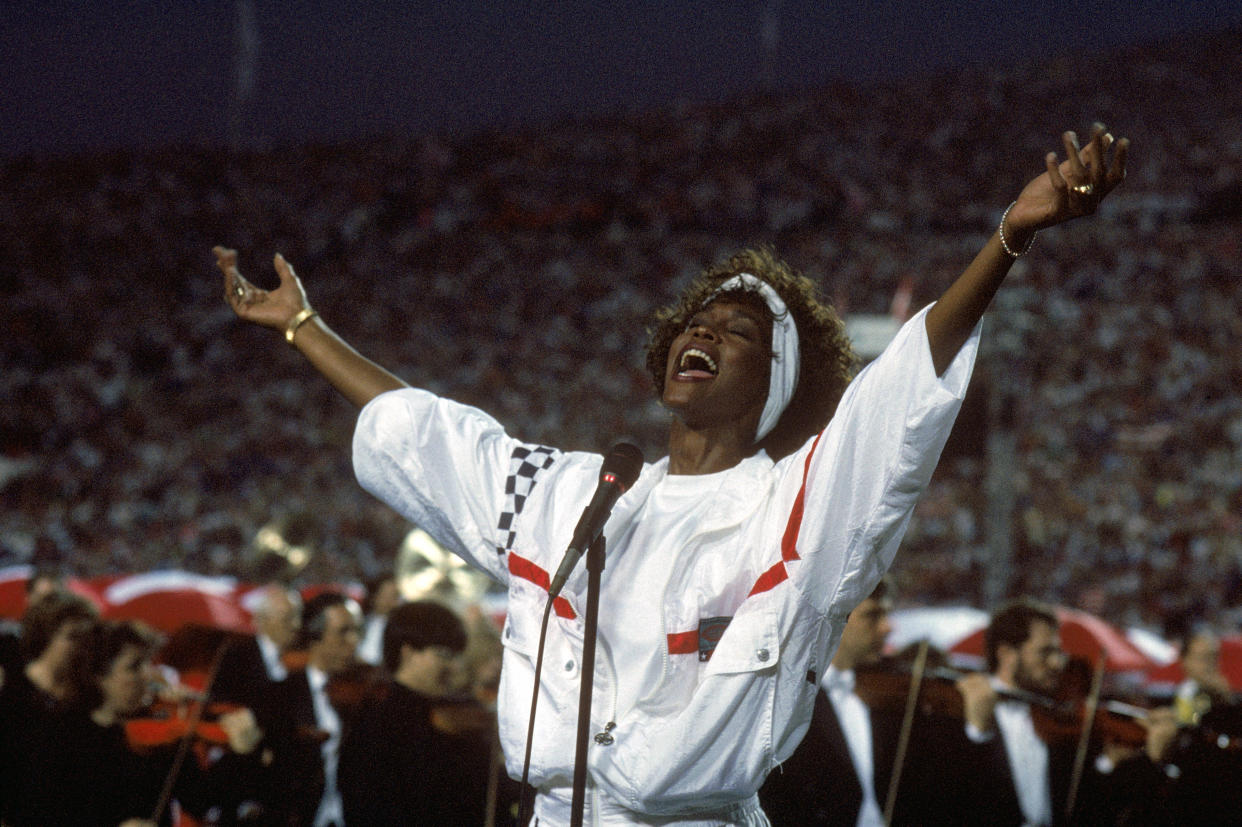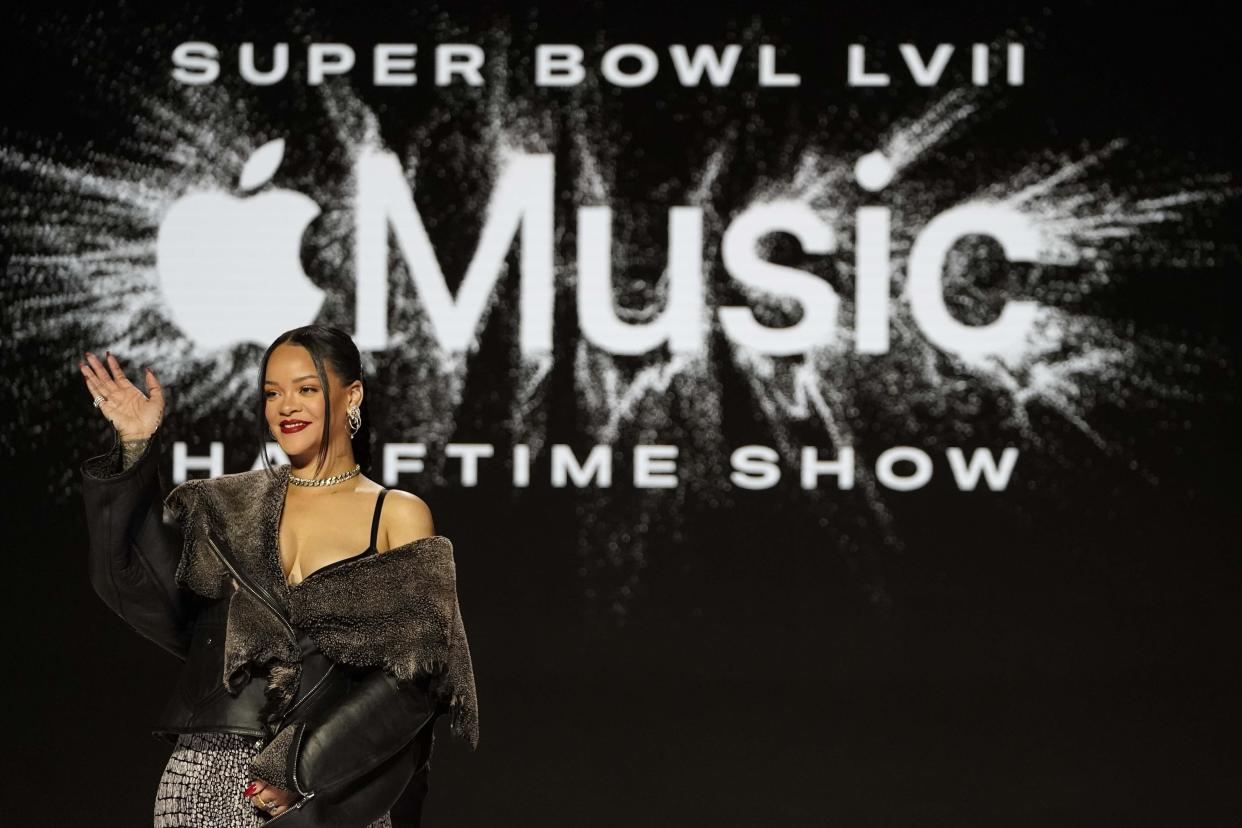#How often do Super Bowl halftime headliners lip-sync instead of singing live? [Video]
![#How often do Super Bowl halftime headliners lip-sync instead of singing live? [Video]](https://s.yimg.com/ny/api/res/1.2/RzUyYIkdW6apk9CNcuTiIQ--/YXBwaWQ9aGlnaGxhbmRlcjt3PTEyMDA7aD03OTk-/https://media.zenfs.com/en/aol_yahoo_sports_800/7351b5ae47f68a586c94b88bca745d62)
Table of Contents
How often do Super Bowl halftime headliners lip-sync instead of singing live? [Video]
Bare-chested Flea did not have a cable connecting his bass guitar to a speaker or amplifier, seemingly a necessity to be heard over more than 80,000 roaring fans inside a cavernous football stadium.
“That guitar is plugged into NOTHING,” tweeted Vernon Reid, a man who knows a fair amount about guitars. Fellow songwriter and guitarist Joe Bonamassa confirmed Reid’s observation with a screenshot and added, “Flea… I mean we all know, but for god’s sake at least try to humor the children.”
On Feb. 4, 2014, two days after the Super Bowl, Flea came clean in a post on the band’s website. He said the NFL encouraged Chili Peppers frontman Anthony Kiedis to sing live during the band’s halftime show performance but made it clear that Flea, guitarist Josh Klinghoffer and drummer Chad Smith would have to pre-record an instrumental track.
“I understand the NFL’s stance on this, given they only have a few minutes to set up the stage,” Flea wrote. “There [are] a zillion things that could go wrong and ruin the sound for the folks watching in the stadium and the TV viewers.”
On Super Bowl night, the Chili Peppers saw no reason to perpetuate a charade and plug in their guitars. They could have tried to make it seem like they were playing live and “avoided bumming people out,” Flea wrote, but the band “thought it better to not pretend.”
Not plugging in their instruments, Flea added, “ seemed like the realest thing to do in the circumstance.”
Flea’s candor pulled back the curtain on one of Super Bowl halftime show’s worst-kept secrets. Artists often rely on pre-recorded instrumental or vocal tracks given the pressure to avoid a high-profile gaffe, the time crunch to set up and fine-tune sound equipment and the challenge of singing flawlessly while also doing high-intensity, technically precise choreography.
The NFL requires most bands to record background tracks in advance and purport like they’re playing on stage, longtime Super Bowl sound engineer Patrick Baltzell told the Verge in 2018. Only soloists typically get to perform their parts live, Baltzell said, citing guitar solos from Prince and Bruce Springsteen as examples.
Lead vocalists almost always take pride in singing live, but the NFL records a rehearsal as an insurance policy. That gives headliners a pre-recorded vocal track that they can sing over as much or as little as they like.
In 2015, Katy Perry said before her show that she expected “a lot of it will be live,” a tacit admission that she’d occasionally resort to lip-syncing when her over-the-top choreography required it. Other artists have done the same but haven’t been so forthright about it.
This year on Super Bowl Sunday, it will be Rihanna’s turn to wrestle with the halftime headliner’s annual dilemma. The nine-time Grammy-winning pop star must decide if she can sing live from start to finish while still delivering Super Bowl-worthy spectacle and showmanship.

Even Whitney Houston lip-synced
Justin Stoney swears he needs no more than five seconds to determine if a Super Bowl halftime artist is lip-syncing or not.
“That’s how obvious it actually is to a trained ear when something is pre-recorded,” the founder of New York Vocal Coaching told Yahoo Sports.
To Stoney, the most obvious tell is if the singer hits every note perfectly. Not even the world’s top artists sing flawlessly, Stoney says, without the help of a producer in a studio smoothing out the occasional flat or sharp note.
“A studio recording is autotuned and fixed within an inch of its life,” Stoney said. “But when someone sings live, even superhumans like Whitney Houston or Michael Jackson, you should hear a little human quality.”
There are also some subtle visual clues that Super Bowl viewers can use to figure out whether an artist is singing live or not.
Does the volume of the singer’s voice change while moving a handheld microphone closer to his or her mouth? Are there signs of strain in the neck or throat area when a singer belts out a note with lots of vibrato? Do the words the singer is mouthing appear to correspond with those that are audible?
In 1998, the NFL chose folk superstar Jewel to sing the national anthem before Super Bowl XXXII in San Diego. She drew criticism for lip-syncing to a track she had previously recorded, something that viewers picked up on when she blatantly missed her cue while waving to the crowd and failed to mouth the opening words of the song.
Five years later, Shania Twain faced similar lip-sync backlash after her Super Bowl halftime performance. At one point during the song “Up!” Twain enters the crowd and briefly pauses to interact with fans yet her “voice” appears to carry on without her lips moving.
And yet despite the stigma attached to lip-syncing, it doesn’t always end badly. In fact, the most celebrated rendition of “The Star-Spangled Banner” was pre-recorded.
In January 1991, producer Rickey Minor flew to Los Angeles to have Whitney Houston record the vocal track for the national anthem at the upcoming Super Bowl. Houston needed only a single take to deliver a soulful, slow-paced rendition that showcased her incomparable talent.
Everything seemed set until NFL commissioner Paul Tagliabue listened to Houston’s recording a week before the Super Bowl and deemed it too slow. He tasked longtime NFL Super Bowl czar Jim Steeg with asking John Houston, Whitney’s dad and manager at the time, to have her re-record it. Steeg told Tagliabue, “I’ll place the call but they’re going to say no.”
“I called John Houston and I probably held the phone 40 feet from my head,” Steeg told Yahoo Sports with a laugh. John Houston said no.
A week later, clad in a white track suit with red and blue trim, Whitney sang passionately into a dead mic as the crowd at Raymond James Stadium in Tampa Bay and TV viewers across the nation heard her pre-recorded version. Against a backdrop of the first Persian Gulf War, ABC interspersed images of soldiers standing at attention, of emotional fans and of the flags of the U.S. and the wartime coalition countries flapping in the wind.
The outpouring of love for Whitney’s version of ‘The Star Spangled Banner’ was unprecedented. The song spent months on the Billboard pop charts. People called their local radio stations to request they play it.
There was controversy at the time over Whitney lip-syncing, so she quieted any doubters later in 1991 with a live rendition during a hastily arranged TV special. Asked why he recommended Whitney pre-record the anthem for the Super Bowl, Minor cited the unpredictability of live events, the noise of the crowd and the jet flyover and the echo and reverberation in stadiums of that era.
“It’s not like she was up there pantomiming to Barbara Streisand’s voice,” Minor told Yahoo Sports. “I would never advise anyone to sing live. There’s too much at stake. You end up trying to be a hero and turning into a zero.”

How much will Rihanna lip-sync?
When the NFL called to ask Rihanna to headline this year’s Super Bowl halftime show, she says she had a two-word response.
“You sure?”
At the time, Rihanna was only three months removed from giving birth to her first child. She hadn’t performed live since the 2018 Grammys, nor had she released a new album since TikTok came to exist.
After giving it more thought, Rihanna decided the time was right to showcase her catalog of hits on America’s biggest stage. She described the challenge as “exhilarating” on Thursday during an Apple Music event ahead of Sunday’s spectacle.
“When you become a mom, there’s something that just happens where you feel like you can take on the world,” Rihanna added. “You can do anything.”
The Apple Music host unsurprisingly did not try to pin Rihanna down about whether she would lip-sync at all on Sunday, but the pop star did address the “immense” physical challenge of making her return at the Super Bowl. Rihanna admitted the non-stop nature of the jam-packed 13-minute show “takes a toll on your body.”
How demanding Rihanna’s choreography is could go a long way toward determining how much she can sing live. Stoney says that “exerting yourself and running out of breath affects the voice big time,” but he also notes that Rihanna could benefit from the fact that her music doesn’t often require her to strain herself to belt out high or low notes.
“Her vocal range tends to sit in a more comfortable range than some other artists,” Stoney said. “It’s more conducive to a successful live performance with lots of stuff going on. She might not have to lip-sync too often, but it does depend on what fireworks they have planned.”
When Rihanna steps on stage Sunday night, she’ll be at the center of a Super Bowl tradition as timeless as ranking the best commercials or griping about the referees. Many in the audience will be scouring her performance for clues whether she’s singing live or lip-syncing.
Among those will be Stoney, though he argues it’s unfair when Super Bowl acts face criticism for lip-syncing. The halftime show, after all, is more about entertainment than authenticity, more about spectacle than just singing.
“Most singers want to sing live from the bottom of their hearts in the same way athletes want to get out there on the field even if they’re slightly compromised,” Stoney said. “They have great pride in their work and they love what they do.
“If this was a small venue with 50 people and someone got up there and lip-synced, that’s when we don’t appreciate it. But I think we’re very forgiving as an audience when you see a performer riding on lions or flying through the air or doing a lot of jumps. Of course that singing is going to be pre-recorded, and we don’t mind.”
If you liked the article, do not forget to share it with your friends. Follow us on Google News too, click on the star and choose us from your favorites.
For forums sites go to Forum.BuradaBiliyorum.Com
If you want to read more News articles, you can visit our News category.




